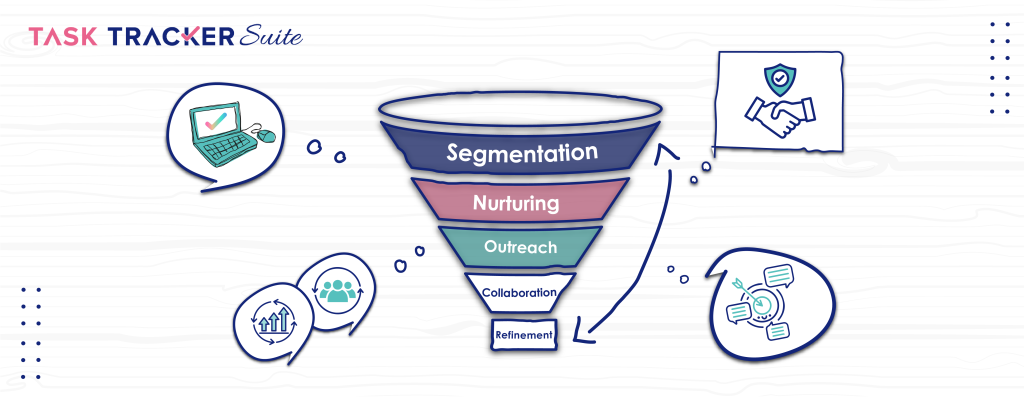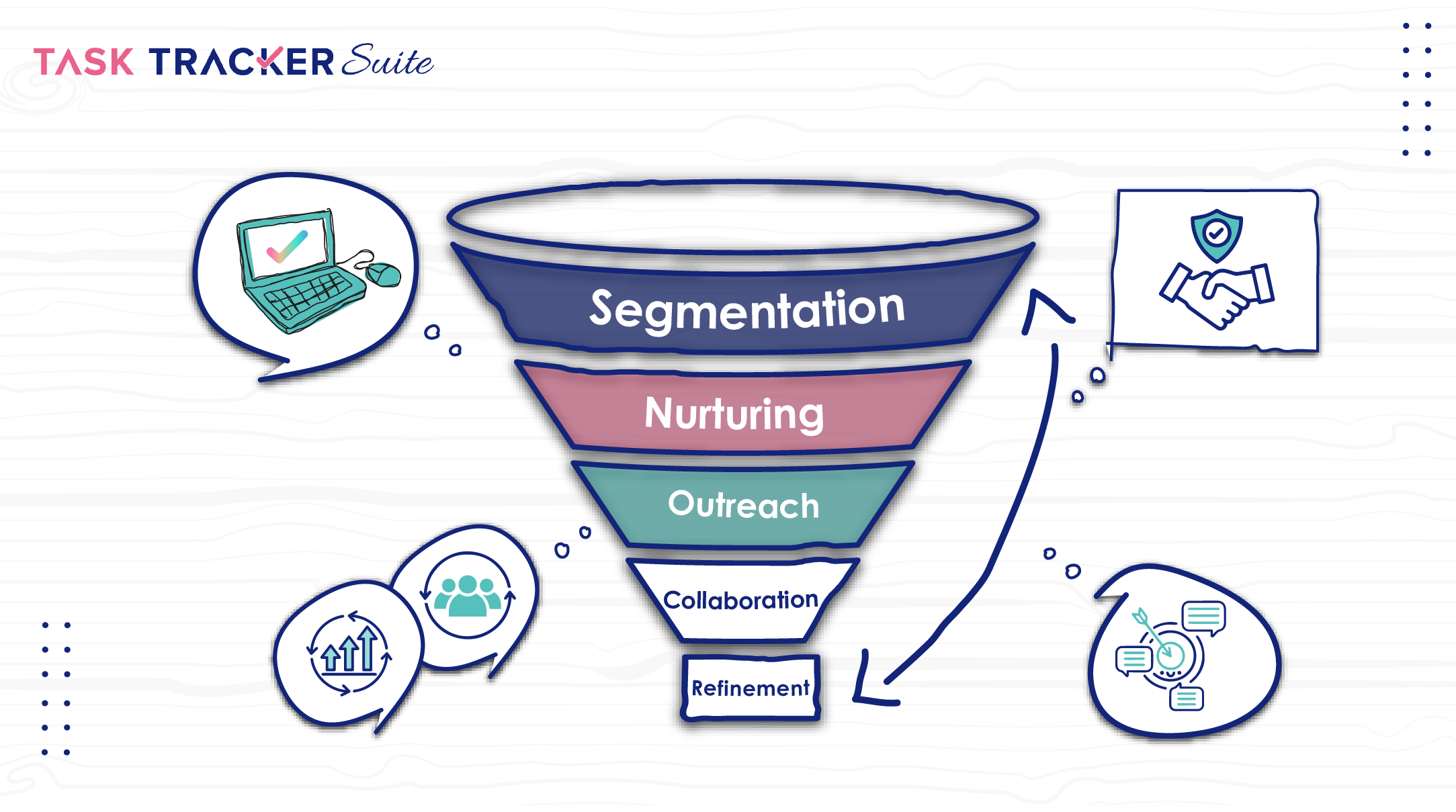
A sales pipeline is the backbone of any successful sales process. It shows how many prospects are in each stage of the sales process, how likely they are to buy, and how much revenue they can generate. However, managing the sales pipeline is not an easy task. It requires constant attention, analysis, and optimisation to ensure that you are moving the right leads forward and closing more deals.
In this blog post, you will discover some proven sales pipeline management techniques that will help you improve your sales results. Let’s get started!
Defining the Modern Sales Pipeline
Before diving into techniques, let’s break down the modern sales pipeline:
- Stages: Clearly define and understand each stage, from prospecting to closing and beyond (post-sale engagement).
- Flow: Visualise the movement of leads through the pipeline, identifying potential bottlenecks and optimising flow.
- Metrics: Utilise data-driven insights to track conversion rate, lead qualification, and overall pipeline health.
Best Sales Pipeline Management Techniques
Technology is changing every day, and so are the ways of managing sales funnels. Businesses are now using different software and sales tracking tools to stand out and meet their revenue goals. Here are the top five techniques that will help you master your sales pipeline.
1. Data-Driven Prospecting and Qualification
The first step in building a robust pipeline in today’s digital world is to generate and qualify leads. To do this effectively, you can leverage sales software that can help you identify ideal prospects based on various criteria, such as industry, location, revenue and size.
After creating a list of potential buyers, develop a scoring system based on customers’ interest, buying capacity and behaviour.
By using a scoring system, you can prioritise high-quality leads, focus on the most promising opportunities and avoid wasting time on low-quality leads.
2. Nurturing Leads for Maximum Conversion
It is not easy to convert leads into customers — most of the time, you need to nurture them before they make a purchase decision. You need to build trust and rapport with them by sharing relevant and valuable information. For this, you can craft your messages based on your ideal customer’s preferences, needs, and behaviour and share them through different communication channels.
You can use various channels, such as email, phone, social media, and webinars, to reach your customers and engage with them.
You can use content marketing, email automation, and targeted outreach to create a personalised and multi-channel nurturing campaign. This will help you build trust and credibility with your prospects and move them closer to a sale.
3. Stage-Specific Sales Outreach and Automation
A sales outreach is a sequence of activities that you perform to contact and follow up with your leads. This sales strategy varies for each stage of your pipeline. For example, you may use a different outreach messaging for leads in the prospecting stage than for leads in the negotiation stage.
To create personalised outreach messaging, understand the goals, challenges, and expectations of your leads at each stage. Then, adjust your communication style, frequency, and content accordingly. For example, you can use more educational and informative content for leads in the awareness stage and more persuasive and compelling content for leads in the decision stage.
For all these, you can automate repetitive tasks using sales tracking tools and integrations. For example, you can integrate your Sales Tracker with your email marketing tool to automatically send follow-up emails to your leads based on their actions. By using automation, you can spend more time building relationships and delivering value to your leads rather than on manual and tedious tasks.
4. Collaboration and Shared Visibility
Collaboration is working together to accomplish one goal, and shared visibility is the ability to see and access the same information and data. These two tactics are crucial for improving your pipeline performance, as they enable you to leverage the collective intelligence, experience, and skills of your team.
You can use sales tackers to communicate and collaborate with your team, share pipeline status, progress, and challenges and provide instant feedback and support.
5. Continuous Optimization and Experimentation
Managing a healthy pipeline isn’t a one-time process. You need to keep optimising it with constant monitoring, analysing, and improving sales performance. Keep experimenting to test new ideas, techniques, and tools to see what works best for your pipeline.
You can use sales analytics tools to measure and track metrics, such as conversion rates, sales cycle length, pipeline velocity, and pipeline value.
Measure the impact of your experiments and compare them with your baseline performance. Keep what works, discard what doesn’t, and repeat what can be improved.
Final Thoughts On Sales Pipeline Management
Implementing these sales pipeline management techniques will help you retain, nurture, convert, and close more leads. By applying these techniques and using modern sales tools, you can transform your pipeline into a sales machine that boosts your revenue.
The best way to optimise a sales pipeline is to automate it with Sales Tracker. This powerful tool helps you streamline your sales process, track and manage your sales pipeline, build and manage a high-performing sales team and more.
Sounds good? Sign up for free today and book a demo with the Sales Tracker Team.


Leave a Reply